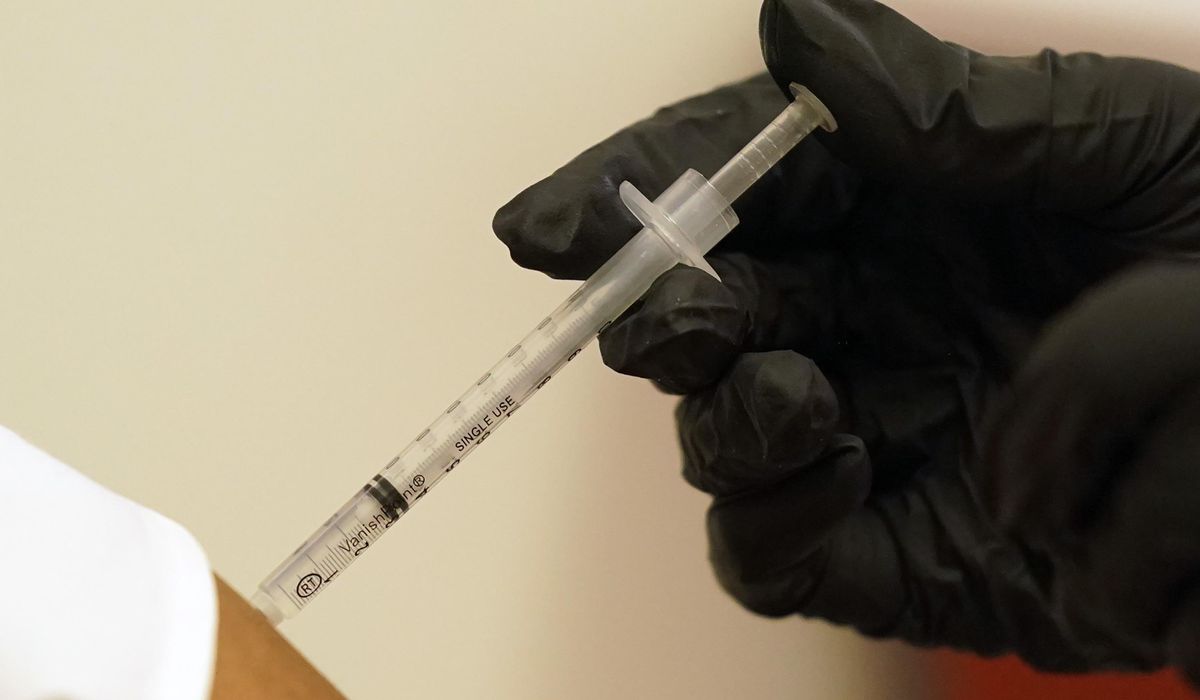
Scientists are working feverishly to develop the next generation of coronavirus vaccines, including a nasal spray, even as President Biden and others struggle to get the current COVID-19 shots in Americans’ arms.
Multiple teams are focused on a spray or vaccine that could tamp down transmission of the virus by attacking membranes in the nose, where infection typically begins. A spray would be much easier to use than making an appointment with a professional wielding a needle.
“You would pick up the spray at CVS; you would spray yourself,” said Bruce Turner, CEO of Xanadu Bio, which is working with Yale researchers toward human trials of a nasal spray COVID-19 booster that could be used every four to six months to restore waning immunity. “The focus is on getting this into the clinic as soon as possible.”
Other researchers are playing the long game. They hope to land a “pan-coronavirus” vaccine after at least three pathogens in this family have bedeviled society over the past two decades.
The U.S. Army is steeped in trials of a vaccine that uses a soccer-ball-shaped protein to test against spikes of multiple coronavirus strains. Researchers hope the Army vaccine is nimble enough to protect against multiple variants as the world frets over another devastating strain and the original SARS virus.
“I think it’s promising. The first vaccine is virtually never the last vaccine. The measles vaccine was replaced by a better vaccine later,” said Dr. Paul Offit, a pediatrics professor at the University of Pennsylvania and a member of the Food and Drug Administration’s vaccine advisory panel.
Right now, the world is relying on a limited set of vaccines that have been effective in staving off severe illness. Messenger-RNA vaccines from Pfizer-BioNTech and Moderna are the most prominent in the U.S.
Data from King County, Washington, which studies relative risk from COVID-19 while adjusting for age, found that vaccinated and boosted people were 25 times less likely to be hospitalized and 33 times less likely to die than unvaccinated people. Mr. Biden and other officials are pleading with vaccine holdouts to come forward to ease the strain on hospitals.
“The mRNA vaccines have been remarkable in holding up against severe disease,” Dr. Offit said. “The problem is some people aren’t getting them.”
The antibody protection wanes over time, and the vaccines haven’t been as effective as initially hoped in staving off all infection. The situation breeds skepticism and makes it difficult to stamp out the spread of COVID-19.
While existing vaccines protect internal systems, a nasal spray might neutralize the virus in the outer part of the body that is first infected and expels the virus to others.
“It’s transmission that has this pandemic continuing,” Mr. Turner said.
The spray was developed by his New Haven, Connecticut-based company, and Yale produced immune responses in the nose, throat and lungs of mice. Researchers are moving on to hamster and nonhuman primate studies to validate their findings.
“This local immunity provides much more effective defense against infection and helps prevent transmission,” said Akiko Iwasaki, a Howard Hughes Medical Institute investigator at Yale University. “Second, a nasal spray is much easier to administer, not requiring medical personnel, and thus cheaper. Third, a nasal spray is more accepted in people with needlephobia.”
The scientists are trying two technology platforms: recombinant spike protein and spike-mRNA. It is unclear how long it would take to get a spray to market, but Mr. Turner said the one- to two-year timeline under which existing COVID-19 vaccine makers are operating is a reasonable estimate.
Stanford University researchers are working on a spray that likewise showed promise in mice, though they are deciding whether to use a DNA- or RNA-based vaccine before moving to human trials.
Researchers at the University of Helsinki in Finland are working on a nasal spray to protect vulnerable people against coronavirus infection for up to eight hours. They said mice that received the spray were protected and those that did not got infected.
Scientists at the National Institutes of Health are working on a nasal spray for young children. They were developing a spray to target human parainfluenza virus type 3 (HPIV3) but tweaked the project to include COVID-19. The agency said in December that the spray seemed to work well in hamsters.
Another major plank of next-generation vaccine development involves the pursuit of a pan-coronavirus vaccine, or “universal” coronavirus vaccine.
The federal government is funding this area of research, but it remains in early stages and requires scientists to strike a “delicate balance between breadth and immunity,” said Kizzmekia Corbett, an assistant professor of immunology and infectious diseases at the Harvard T.H. Chan School of Public Health. Attempting to tackle multiple viruses at once tends to weaken the specific response to each threat, she told The Washington Times.
“Sometimes you can lose specificity and potency as you expand out, so there is this kind of seesaw effect that you see,” said Ms. Corbett, who previously worked on COVID-19 vaccines at NIH.
NIH awarded $36 million last fall to the University of Wisconsin-Madison, Brigham and Women’s Hospital in Boston and Duke University in Durham, North Carolina, to work on a pan-coronavirus vaccine.
Dr. Anthony Fauci, director of the National Institute of Allergy and Infectious Diseases, is increasingly talking up the need for a universal shot, given that three coronavirus outbreaks — the severe acute respiratory syndrome (SARS), Middle East respiratory syndrome (MERS) and COVID-19 — have afflicted humans over the past 20 years.
He said it would be unreasonable to think scientists could land a vaccine for all coronaviruses but a subset known as sarbecoviruses could be targeted.
The Walter Reed Army Institute of Research said in December that its spike ferritin nanoparticle (SpFN) COVID-19 vaccine produced a strong response in primates against the original strain of the coronavirus, its known variants and the original SARS virus from 2002.
Defense One reported that the blood-protein-based vaccine includes 24 “faces” that allow scientists to attach the spikes of different strains and provide a broad defense against coronaviruses.
American drugmakers Pfizer and Moderna are working on vaccines specific to omicron, the dominant variant now. The shots won’t be available until after the surge subsides, making it unclear whether they will be needed or whether the government will stick with its boost-as-needed strategy with existing products.
“I don’t want anyone to think that pan-coronavirus vaccines are literally around the corner in a month or two. It’s going to take years to develop in an incremental fashion,” Dr. Fauci said earlier this year. “Our current vaccine regimens do provide strong protection, particularly when used with a booster, against severe coronavirus disease and death.”
For more information, visit The Washington Times COVID-19 resource page.








